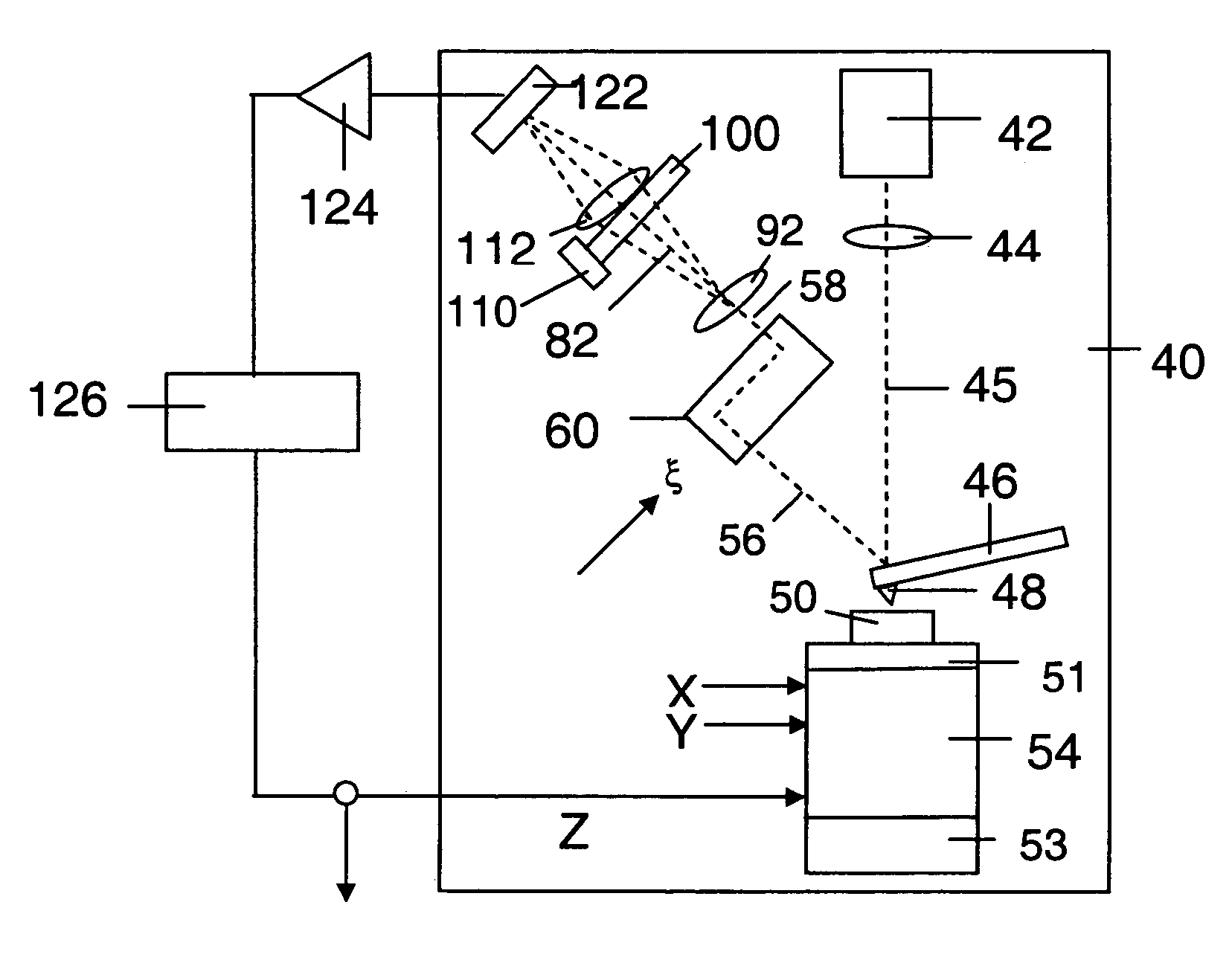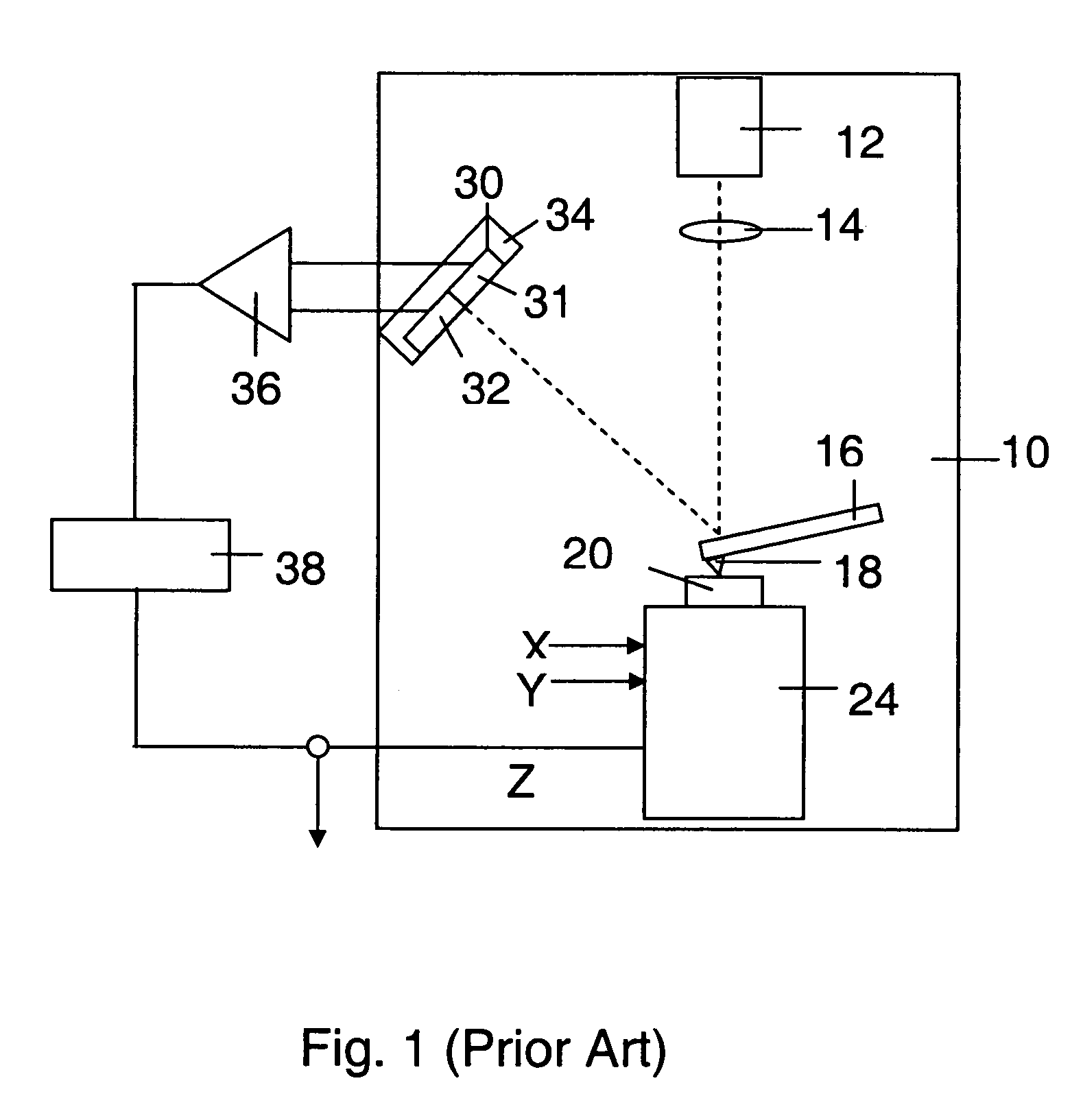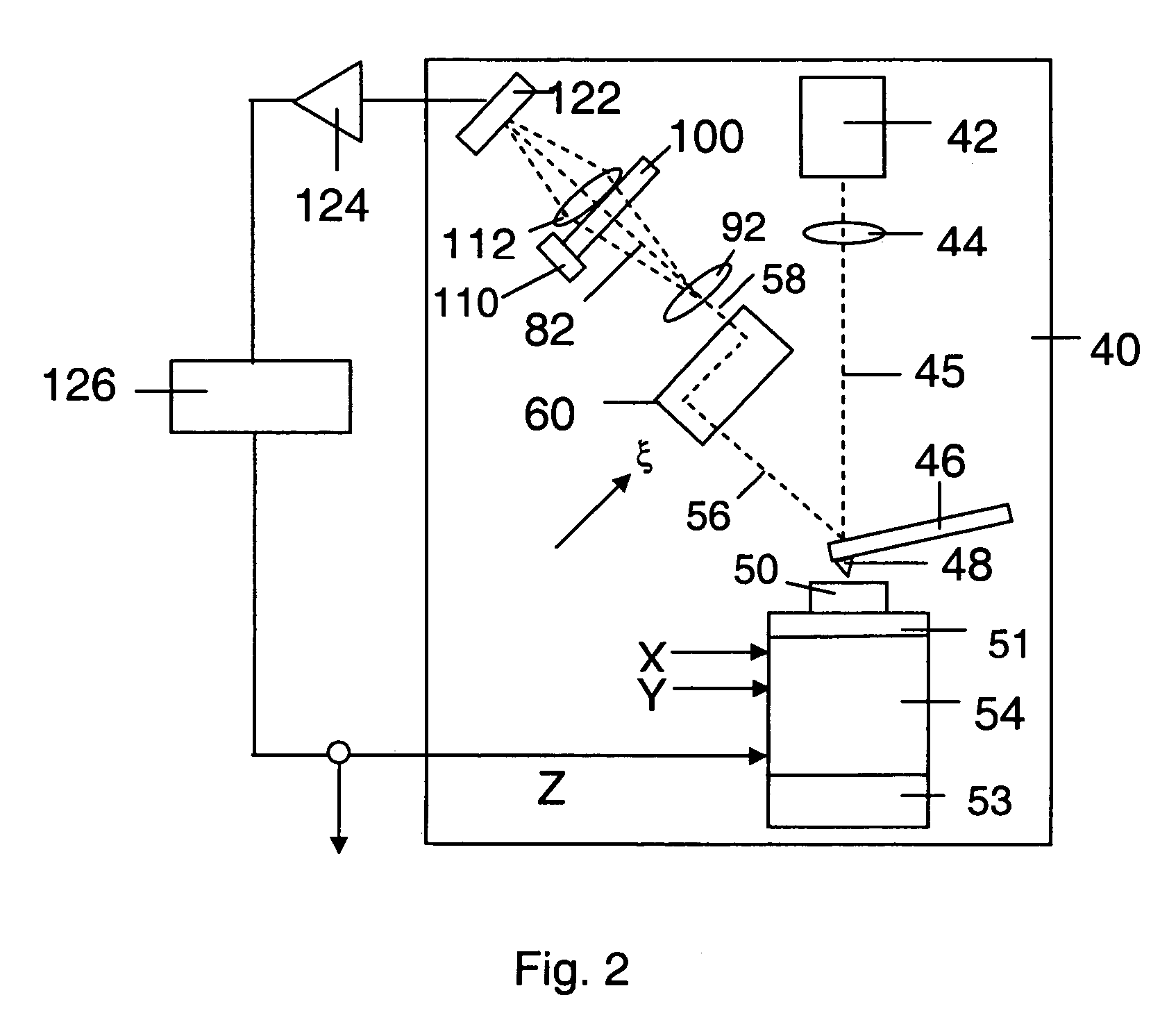High sensitivity scanning probe system
a scanning probe and high sensitivity technology, applied in the field of scanning probe systems, can solve the problems of optical interference, limited vertical resolution, and inability to provide the vertical resolution of optical techniques, and achieve the effect of cancelling out noise in the scanning probe system
- Summary
- Abstract
- Description
- Claims
- Application Information
AI Technical Summary
Benefits of technology
Problems solved by technology
Method used
Image
Examples
Embodiment Construction
[0028]An embodiment of the present invention is shown in FIG. 2. An atomic force microscope system 40 includes a light source 42 (preferably, for example, a laser) that produces a coherent light beam 45. The light beam 45 is directed through a first lens 44 such that the light beam 45 is focused onto a cantilever probe 46, near the free-end of the probe 46. The cantilever probe 46 has a sensing tip 48 on a face opposite that on which the light beam 45 is focussed. The sensing tip 48 when in use is proximate a surface of a sample 50.
[0029]The sample 50 is mounted on a piezoelectric system 54 having a movable stage 51, movable in the X-, Y- and Z-directions within a base 53. The piezoelectric system 54 is operable to translate the sample 50 in the X-, Y- and Z-directions by applying voltages to the respective axes of a piezoelectric crystal.
[0030]The cantilever probe 46 is mounted such that the sensing tip 48 is in contact with or proximate the top surface of the sample 50. The atomic...
PUM
 Login to View More
Login to View More Abstract
Description
Claims
Application Information
 Login to View More
Login to View More - R&D
- Intellectual Property
- Life Sciences
- Materials
- Tech Scout
- Unparalleled Data Quality
- Higher Quality Content
- 60% Fewer Hallucinations
Browse by: Latest US Patents, China's latest patents, Technical Efficacy Thesaurus, Application Domain, Technology Topic, Popular Technical Reports.
© 2025 PatSnap. All rights reserved.Legal|Privacy policy|Modern Slavery Act Transparency Statement|Sitemap|About US| Contact US: help@patsnap.com



